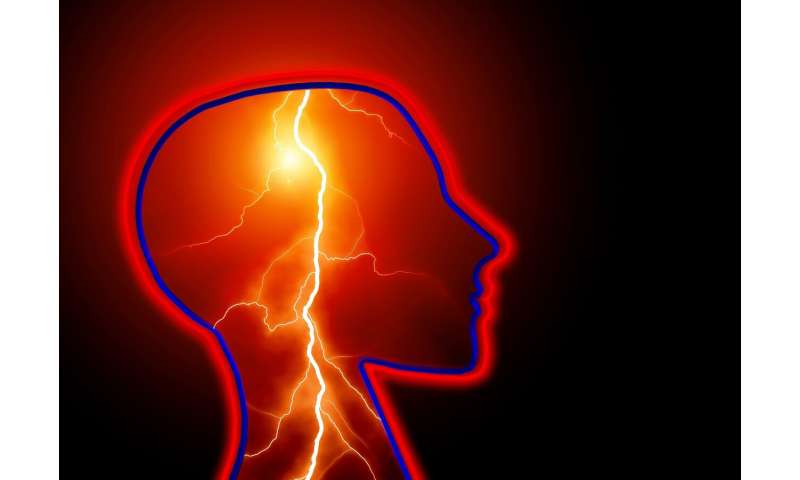
In a case series study that explored the association of COVID-19 and acute ischemic stroke, researchers at Emory University Hospital observed higher than expected rates of unexplained or “cryptogenic” strokes, as well as delays in stroke presentations or symptom recognition. Results were published online Sept. 18 in PLOS ONE.
Ischemic stroke, caused by a clot that blocks blood flow to the brain, is the most common form of acute stroke. But in some instances, despite looking for causes of these strokes—by a thorough cardiac evaluation (heart conditions are one of the most common causes); by looking at blood vessels supplying the brain or by testing for increased blood clotting conditions—the cause cannot be determined.
The study looked at COVID-19 patients with ischemic stroke from the Emory University Hospital system. Of 396 ischemic stroke patients admitted during the study period from March to July 2020, 13 were diagnosed with COVID-19. Researchers found the occurrence of stroke greater in COVID-19 patients who had risk factors like diabetes, hypertension, hyperlipidemia or atrial fibrillation/flutter. Males and African Americans were predominantly affected by strokes in the study.
“Interestingly, while cryptogenic strokes account for only 10 to 30% of all strokes, in our study we found it in 69% of the patient population which is extremely high and suggests the possibility of COVID-19 as a likely contributory factor in this presentation,” says Dinesh V. Jillella, assistant professor of neurology, Emory University School of Medicine.
Jillella says compared with the patients who did not have COVID-19, this was a statistically significant difference of 69% of strokes of cryptogenic etiology in the COVID-19 ischemic stroke group compared to only 17% in the non-COVID ischemic stroke group.
“One of the most important findings from our study also pertains to the delayed recognition of stroke symptoms either due to delays in presentation or recognition of symptoms,” says Jillella.
The study observed a prolonged average amount of time to presentation and symptom recognition averaging up to five days, a potential impact of the COVID crisis. These delays limited the use of acute reperfusion treatments, including drugs and surgery, to restore blood flow in or around the blocked vessels which can only be used when patients present within a 24-hour period.
The researchers explained that delayed presentations could be a result of patients waiting longer before coming to the hospital due to self-isolation or quarantine precautions or the fear of contracting COVID that have led to a general decline in acute stroke evaluations across the country.
Jillella says study findings, therefore, highlight the need for increased community awareness/education regarding the urgency of stroke symptoms and the need to ensure rapid evaluation to facilitate early stroke treatments.
Also, since patients with COVID admitted to the hospitals are generally sick and might not be able to express their symptoms well, it is very difficult to identify some of the subtle and atypical stroke symptoms by the doctors/health care workers especially when such patients are also intubated (on respiratory support), needing the hospital staff—clinicians, nursing staff or associated personnel to be hypervigilant about any changes of patient status.
These findings support the idea that the hypercoagulable (increased clotting) state from COVID could contribute to stroke presentations and also show the issues with regards to delayed presentations and symptom identification in the setting of COVID. Of note, even though COVID causes a hypercoagulable state and can contribute to clot based strokes, it should be noted that only 2.5% of the ischemic stroke admissions constituted COVID related ischemic strokes, which is a relatively small number.
Jillella says the findings from the study need to be confirmed in larger multicenter studies since this is a preliminary case series and is based on observations from a single medical system.
“We have been extra vigilant with regards to patients coming in with COVID-19 symptoms, and for identification of any stroke features in them. Hospital protocols have been modified to ensure appropriate blood thinner usage is done based on the current updated national guidelines since it is being shown in multiple studies that COVID related hypercoagulable state can contribute to strokes directly,” says Jillella.
Source: Read Full Article